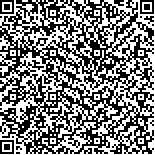| 摘要: |
| 景观感知已成为风景园林、城乡规划
等学科领域重要的研究方向,而众包技术的产
生与应用降低了景观感知的研究困难程度,以大
样本量的用户产生内容为景观感知研究提供了
新的方法与思路。本文简要阐述了景观感知的
发展历程与发展现状,以“显性—隐性”数据的
适用为切入点论述了众包技术在景观感知研究
中的数据类型及技术类型,通过对不同研究主
题与不同研究尺度下多个案例的对比分析,阐述
了众包技术在景观感知与偏好研究中的具体抓
取与应用方式。文末总结并提出了众包技术在
景观感知研究应用中存在数据力度、数据精确
度和技术操作等方面的不足,对数据获取和技
术平台搭建的应用前景进行了展望。 |
| 关键词: 风景园林 景观感知 众包技术 志愿
者地理信息 公众参与式地理信息系统 |
| DOI:10.13791/j.cnki.hsfwest.20230118 |
| 分类号: |
| 基金项目:国家自然科学基金青年项目(51908035);北京市社
会科学基金青年项目(19YTC040);教育部产学合
作协同育人项目(202101042010,津发科技-工效学会
“人因与工效学”项目) |
|
| The Application of Crowdsourcing Technology in Landscape Perception Research |
|
WEI Fang,ZHANG Ying,XIN Haoru,CHANG Xiangqi
|
| Abstract: |
| Landscape perception has become an important research direction in landscape
architecture, urban and rural planning and other disciplines. The generation and application of
crowdsourcing technology has reduced the difficulty of landscape perception research, and provided
new methods and ideas for landscape perception research with large sample size of user generated
content. This research briefly expounds the history and current situation of landscape perception.
The development of landscape perception theory has gone through four stages: 1) the research of
environmental psychology in 1910; 2) the research of perception in environmental psychology in
1950-1970; 3) the landscape perception was clearly proposed in 1960; 4) the quantitative analysis
based on landscape beauty in 1970-1980. This systematic analysis and research developed into an
independent research category: landscape perception theory.
At present, under the background of “Internet +” , the research methods and perspectives for
landscape perception are more diverse with the development of data platforms and new technologies.
However, there is no systematic research on the application of data capture, classification and
processing in specific research fields.
This research discusses the data types and technology types of crowdsourcing technology
in the research of landscape perception from the perspective of the application of “explicit” data
and “implicit” data. On one hand, “explicit” data which are more targeted relies on the landscape
perception investigation and research platform. On the other hand, “implicit” data which have higher
information volume and public participation base on social media and photo sharing platform. In
addition, the sources and platforms for obtaining data are different, such as internet technology,
collaborative technology, multimedia and interactive technology and data processing technology.
The “explicit implicit” crowdsourcing data can be applied to the research and analysis of
landscape perception in different scenarios (such as landscape preference survey, transformation
opinion collection, user behavior research, etc.) and at different scales (street scale, district scale,
urban scale and regional scale). In this paper, Nanjing Suojin village community reconstruction,
streetscape research of Human Computer Interaction Lab of University of Maryland, green space
research in Szeged city, landmark popularity research of Vienna City, and physical level of landscape
value analysis of New Zealand, are selected as cases to introduce and compare. This paper expounds
the specific capture and application methods of crowdsourcing technology in the research of
landscape perception and preference.
This study proposes that crowdsourcing technology in the application of landscape perception
research is more intuitive and more rapid than traditional research methods, such as issuing
questionnaires, conducting field observation and field interviews. It improves the problems of high
cost and long time-consuming in landscape perception research, and visualizes how people perceive
and interact with the landscape, so as to obtain high sample size in a short time and subtle changes
in real time. The reasonable crowdsourcing model adopted in the research of different scales is
conducive to the rapid collection of effective data.
This paper summarizes the differences in the application of explicit and implicit crowdsourcingdata. At present, the research on different dimensions of landscape perception by crowdsourcing technology is often based on explicit crowdsourcing data and
supplemented by implicit crowdsourcing data. Different “explicit implicit” crowdsourcing model under different scales has its own advantages. Compared
with the large-scale research, the small-scale research is more convenient to carry out the explicit data or comprehensive research method, and is more
widely used at the street scale and the district scale. However, with the increase of scale, it becomes more difficult to build the research platform of landscape
perception.
At the same time, this study also points out the shortcomings of crowdsourcing technology in terms of data strength, data accuracy and technical
operation, such as low public participation, small number of samples and lack of data support.
Finally, the application prospect is put forward in the direction of data acquisition and the construction of technical platform. The research and
application mode of crowdsourcing combined with landscape will be improved day by day: transforming small data into big data, transforming single
scale into multi-scale, and actively promoting and improving the research of crowdsourcing technology on landscape perception in multi-scale field. At the
same time, it will actively carry out interdisciplinary cooperation, improve and enhance the operation platform and application methods of crowdsourcing
technology, improve the public participation in landscape perception research and the human nature of landscape perception information acquisition
methods. |
| Key words: Landscape Architecture Landscape Perception Crowdsourcing Technology Volunteered Geographic Information Public Participation
Geographic Information System |


